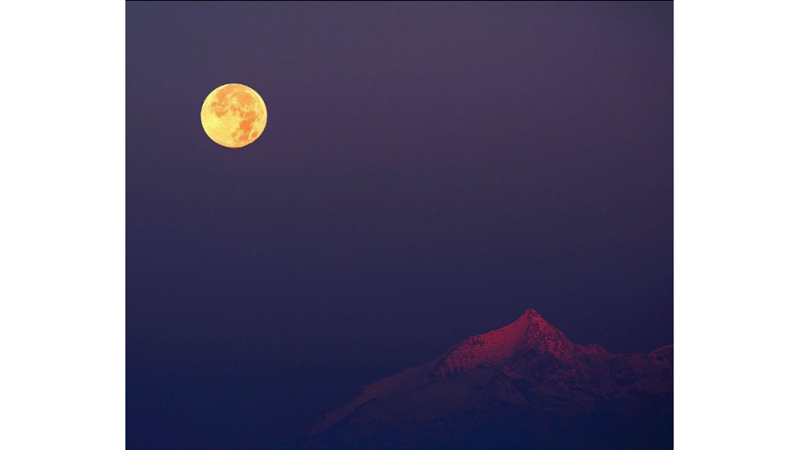According to the Farmer's Almanac, this month's full moon coincides with deer hunting season. This year's Hunter's Moon is even more special because, as a supermoon, the Moon becomes full at the closest point in its elliptical orbit to Earth.
At this closest position, the Moon can appear up to 14 percent larger and 30 percent brighter than the dimmest full moon of the year, which occurs at the farthest point in its orbit. Although the 14 percent difference is not easily noticeable, the full moon will be slightly brighter than full moons at other times of the year.
This full moon has an important meaning for many cultures around the world. It occurs in the middle of the Hebrew calendar month of Tishrei and marks the beginning of the seven-day holiday of Sukkot. In Hindu culture, it is known as Sharad Purnima and is also called Kumara Purnima, Kojagari Purnima, Navanna Purnima Kojagrat Purnima or Kaumudi Purnima. For Buddhists, this full moon marks the end of the three-month Vassa fast that monks observe during the monsoon season. In Myanmar, the three-day Thadingyut Festival of Lights, known as the Festival of Illumination, is celebrated with this full moon. In Sri Lanka, the Kathina festival, which follows Vap Poya, is a time when people offer gifts to the monks.
Image description:
The full moon shines bright golden in the upper left part of the image. The full moon stands out against a hazy purple sky. In the lower right corner, a snowy hill can be seen bathed in deep red light.
Credit: NASA


 Nielawore
Nielawore









Yorum yazmak için lütfen giriş yapınız